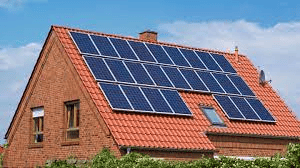We all take our creature comforts for granted. When we want a light on or some warmth, all we need to do is flick a switch and we have everything we require for our comfort. Do you ever wonder how this amazing energy reaches our homes? Let’s take a look at the different forms of energy and how it is harnessed and sent to our homes:
Solar
Solar panels are a commonplace sight on the rooftops of the UK. Unbelievably, the Sun is 90 million miles away, but it takes just 10 minutes for its light to hit the Earth. When these rays reach our solar panels, the electrons flow through cells on the panel and produce electricity. An individual cell can produce several volts of electricity and all the cells together create a larger current and voltage. Homes with solar panels can sell unused electricity back to the National Grid. When thinking about electricity, is your Electric Meter box in good condition? If you need a new Electric Meter box, go to Meterbox.
Gas
The gas we receive in our UK homes is piped mainly from the East and North Irish sea. The remainder is brought over from various European countries. It is made easier to transport by shrinking the gas particles by 600 times. Power stations burn the gas, which produces heat energy to turn large turbines. The turbines power a generator which is able to convert the mechanical energy into electric energy. Most homes in the UK have a gas connection.
Nuclear
Uranium is a substance that was formed many billions of years ago in supernovas and can now be found in seawater and rocks. It’s a heavy metal that is now responsible for supplying 16% of the world’s electricity needs. It gets converted into pellets of fuel and releases heat when the atoms are split. This process produces incredibly hot steam which is used to turn a turbine, thus creating electricity.
Wind
Humans have been using the natural power of wind since thousands of years BC. The Ancient Egyptians relied on it to sail their ships across the Nile. You’ve probably seen the huge blades of turbines on the horizon, which can now move at up to 30 revolutions per second. These blades convert the wind energy into electricity through a generator, much like the other forms of energy. A transformer is used to change the electricity into the correct voltage for distribution around the country by the National Grid.


